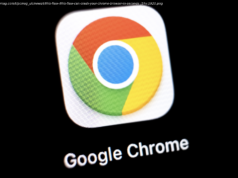 Back in 2015, we covered how Vizio was using its new smart TVs to gather data on the viewing habits of all US customers, then sending that data back to itself to sell to third party advertising companies. What made the breach of customer trust particularly egregious was the fact that Vizio was doing this whether the end-user agreed to it or not. While the company patched that specific problem after it was publicly disclosed by third parties, the FTC opened an investigation into the company’s behavior more generally.
Back in 2015, we covered how Vizio was using its new smart TVs to gather data on the viewing habits of all US customers, then sending that data back to itself to sell to third party advertising companies. What made the breach of customer trust particularly egregious was the fact that Vizio was doing this whether the end-user agreed to it or not. While the company patched that specific problem after it was publicly disclosed by third parties, the FTC opened an investigation into the company’s behavior more generally.
The findings of that investigation have since been announced. Since February 2014, Vizio has sold TVs with Inscape’s ACR content recognition software pre-installed. This software has been retrofitted into previously sold devices that lacked it — unless you’ve got a TV from prior to 2014 that you’ve never connected to the Internet, chances are that you’ve got ACR software sitting on your TV. The FTC notes that this software allows Vizio to collect information on what a consumer is watching on a second-by-second basis:
Here’s how the system works. To you, the following line segment doesn’t look like much:
To a computer, however, each pixel of that image can be translated into data and compared with similar blocks of pixels taken from a huge catalog of TV and movies. When we talk about Big Data giving us access to relationship information that was previously obscured, this isn’t the kind of breakthrough most people had in mind, but that’s what it is. One pixel’s worth of data doesn’t identify anything, but an entire slice of data from a frame can be compared with a comprehensive data base of film and movie “slices” to see which they match up with. Here’s more, from the FTC:
First, Vizio provides aggregate viewing information to third parties for the purposes of measuring audience engagement (what did people watch and how did they watch it). Defendants are given a unique identifier for each television and metrics identifying what people watch, when it was watched, how long it was watched for, and what channels were watched.
Second, Vizio has provided IP addresses of all devices associated with the IP address of the television so that advertisers could determine whether consumers visit a web address shown on TV after seeing an ad for a product or service. This data is also used to determine if someone views a TV program after seeing an online ad. The idea that this data is anonymous in any meaningful way is, of course, hilarious.
Third, consumer data is sold to third parties for the purpose of targeting advertising at them on other devices they may own, based on their television viewing data. This last program got started in March 2016, which means this is what Vizio did as a “Sorry,” after getting caught running data collection on all customers, whether they opted in or not.
In my 2015 write-up, I specifically noted that while IP addresses weren’t considered legal proof of liability, advertisers would be happy to use them.






